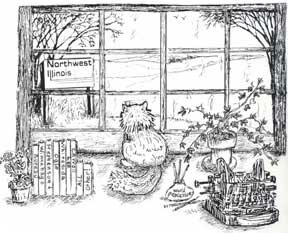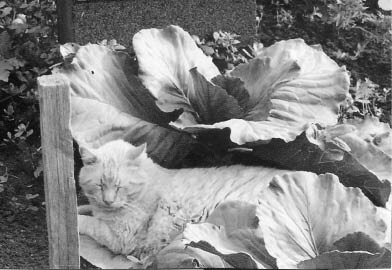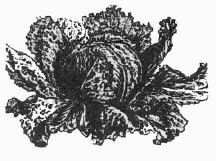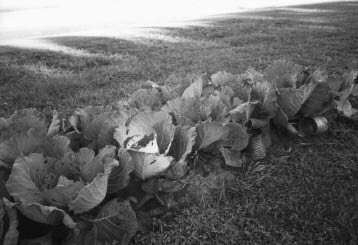
Discover rewarding casino experiences. 

Please Don't Quote Me Cabbage by any other name is kale, kohlrabi, broccoli, Brussel sprouts, collards, charlock, Jersey kale, cauliflower, and so forth. Yes, those all too familiar vegetables are identified commercially as cabbages besides the hard and soft headed varieties we easily recognize.ot and trading place in and out as a port. Then the method of powering boats changed from wood and the way of transportation with it. |
The dictionary simply describes the cabbage as an edible plant of the temperate zones, grown throughout the world—a thick stalk, large head formed by overlapping green to red leaves. From the Middle English word carboche, Old Northern French, caboce meaning head, or boce bump. The “family” name for all is Brassica oleracea followed by the word “form” and such separate identity as acephala or cauliropa which pleases the botanist or the commercial grower. “Form” means little to most of us who have trouble remembering the difference between kale and kohlrabi or collard and charlock, whatever that is. Cabbage, to begin with has been developed in its various forms over centuries and centuries of time into their odd types. But they originally came from the world or centuries of time into their odd types. But they originally came from the wild or sea cabbages that grew along the eastern seacoast of Great Britain, an insignificant plant only a foot or two high. They were also found on the Continent on the opposite shores from England, also.
The wild cabbage had smooth leaves, was shiny and fleshy with large yellow flowers. Though cabbages are dissimilar in looks, they all have pods, seeds, that are alike. What those gardeners in ancient days were thinking to come up with the queer cabbage that evolved is an enigma ... All those miniature heads of cabbage on a stalk, the Brussel sprout, or the tall, phallic kale is truly unlike its original kind. It was too long ago and too deep in the mists of the ancient past to speculate on. Perhaps it was the curiosity of a humble peasant tinkering in his kitchen plot, or a scientifically-bent, mad king. Or did it develop as a border in an abbey’s herborium overseen by a Brother Cadfael who liked to solve every kind of mystery? Most fruits and vegetables have been subjected to much experimentation and cultivation but, oh, my, it’s been a surprise to learn that those aforementioned veggies are not just related but are cabbages in another form! But with differing characteristics and looks, like lots of families.
What distinguishes them apart are such things as leaves ... Open or folded (subtended in vegetable language); terminal heads or small auxiliary heads as in Brussel sprouts; flowering or thickened stalks or elongated and bulbous “knobs.” All these intercross in like types or among the horticultural variations but each is commercially important. They are all called cabbages in the marketplace, Brussel sprouts among the ultimate, tiny, inch in diameter heads, stacked on a stem in the axils of the leaves. It is fairly “new” among the cabbages, it being first described in print in 1587 which speculation thus estimates it had been developed in the early fifteen hundreds or late 1400’s. It took awhile to make it into print in those days especially if you were a cabbage! Hardy collards are grown mostly in the southern United States and are called “winter greens” because they are harvested in late autumn or early winter. Collards rather resemble the rosette of head cabbage but its the lower leaves that are harvested as it grows to about two to four feet high. It and kale are primitive forms of the original cabbages that were first found in the region of the Mediterranean. All cabbages like the cool, kale especially likes a long growing season and is considered a winter crop. Its late harvest indicates that it prefers cooler temperatures. In Great Britain and Europe its lower leaves are progressively cut until reaches about two feet. There is also Jersey kale or Thousand-Headed kale that is a fast-growing plant, a specie different than edible kale is used for livestock feed. The almanac informs gardeners south of about the Mason/Dixon line or a latitude through Washington, D.C. that planting of cabbage should occur about March 1st through 11th or March 26th to 31st, earlyish and dates for crops that grow above ground level. Cabbages being either a spring or “winter” crop have varied planting dates. Some will tolerate temperatures as low as 0º F and most all would like a “resting” period going down to 45º F, otherwise if too long a warm period there will be premature flowering that hampers development and quality. Cabbages are a very important market vegetable so their decline in quality or numbers diminish the market’s economic basics. Cabbages are grown throughout the United States in all kinds of places, needing only good soil, moisture and the right texture. “Homemade” compost or commercial fertilizers are used and two side dressings about three weeks apart is recommended, the nitrogenous kind. Cabbage cabbages are one of the most used of all vegetables throughout the world. They are low in calories and high in fiber with vitamins and minerals and are flavorful with crunchiness, good in salads or tangy in soup or casseroles. Hard-head cabbage is relatively “new” as cabbages go, being described in the Middle Ages. Soft-headed varieties like the Savoys are thought to have originated in the south of Europe from an early time. The soft cabbages should be used shortly after harvest but the hard types can be stored for long periods and then used in cooked dishes and sauerkraut, cabbages are versatile. They can be pointed, globular or flattish; green, gray-green or magenta—the “red” cabbage that makes an accent in a salad. BLUE CHEESE COLESLAW½ head chopped Cabbage with diced Green Pepper and Onion to taste Dash Garlic or use onion and garlic salt. Mix 1 oz. Blue Cheese ½ cup Lite Mayo 1 t. Salt ½ t. Pepper 1 t. Sugar 1 t. Vinegar. Kohlrabi isn’t as familiar to us as other cabbages. Dedicated gardeners do set out a few seedlings, however, and lively food markets display them. The kohlrabi is a thickened stem with an enlarged “knob” just above ground level. It’s harvested when about 2 to 2½ inches in diameter. It is flavorful like a turnip but sweeter and more mild. It is of “recent” origin, meaning in the sixteenth century in Europe where yet today it is fed to livestock. As for the much-used cauliflower (form botrytis) it is a compact, terminal mass of greatly thickened, modified and partially developed flower structures with subtended fleshy stalks. That terminal cluster of flowers for a firm, succulent white “curd” that we recognize as the vegetable we use in salads, soup, casseroles dishes. As it grows the leaves extend above the curd and must be tied above it or cut off several days before harvest so that the sunlight does not discolor it.
Sprouting broccoli and cauliflower both were cultivated around the Mediterranean Sea at an early time. Despite their wide and long time usage in Italy, they really weren’t much known in the United States until 1925. The edible part of the plant will grow two to four feet tall and are the unopened flower clusters with subtended fleshy stalks too (the leaves under the flowers). Broccoli is now widely used in the States, most of it frozen though it is popular as a fresh vegetable, too. The opening sentence of this item, the well-known “a rose by any other name (would smell as sweet) uses instead a cabbage” by its several names though we probably think of the familiar head cabbage as the one and only. Now we learn that all those other veggies are actually cabbages, too, but in other guise. But there is one identity problem if we look hard enough. There is a cabbage named Heading Broccoli that is a slow-growing winter cabbage (but broccoli, remember) and in the American marketplace it is known as a cauliflower. They are interchangeable. Both have their own climactic and cultural requirements and perhaps the Cauliflower has more of a snob appeal at the market than Heading Broccoli. So, by rights, we can say a Cauliflower by any other name is a Heading Broccoli! Go figure.
|






